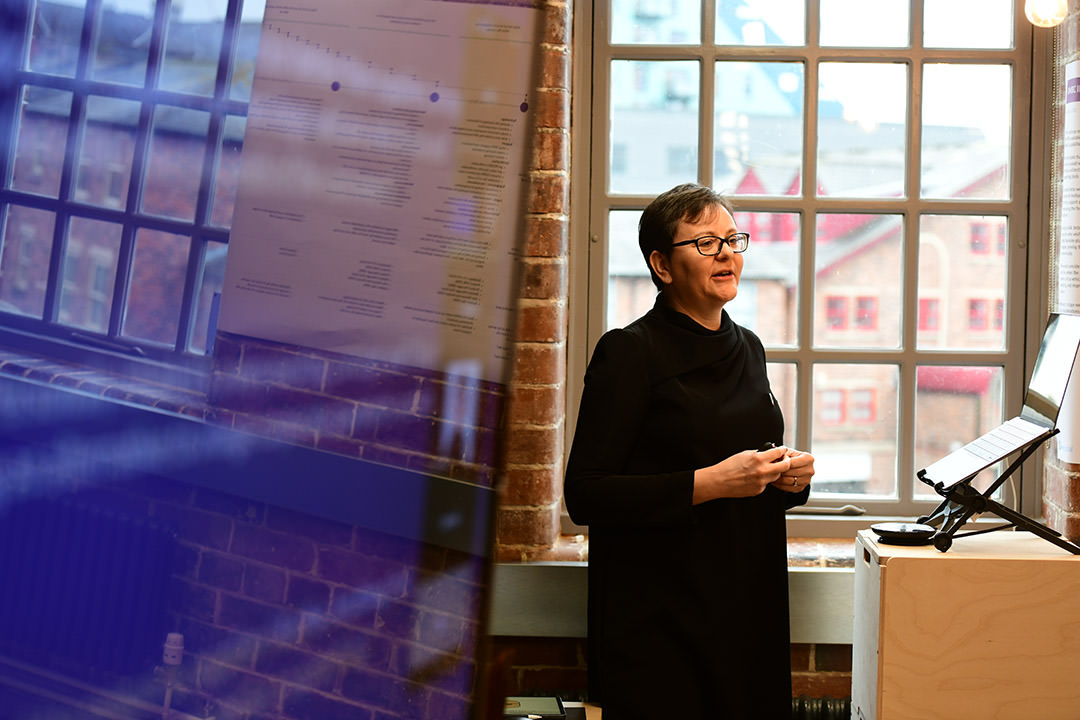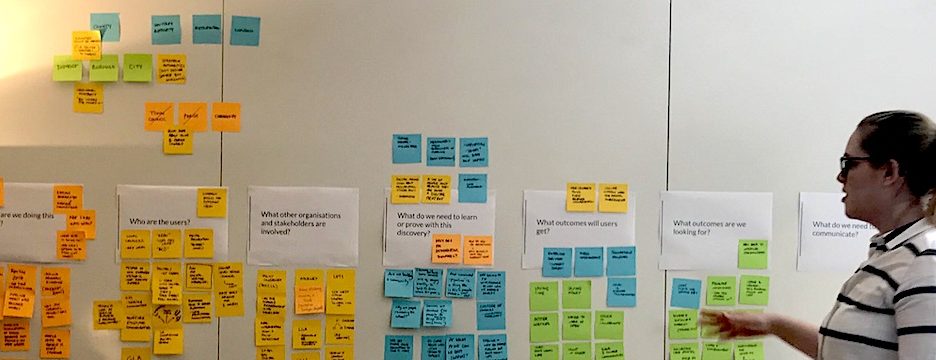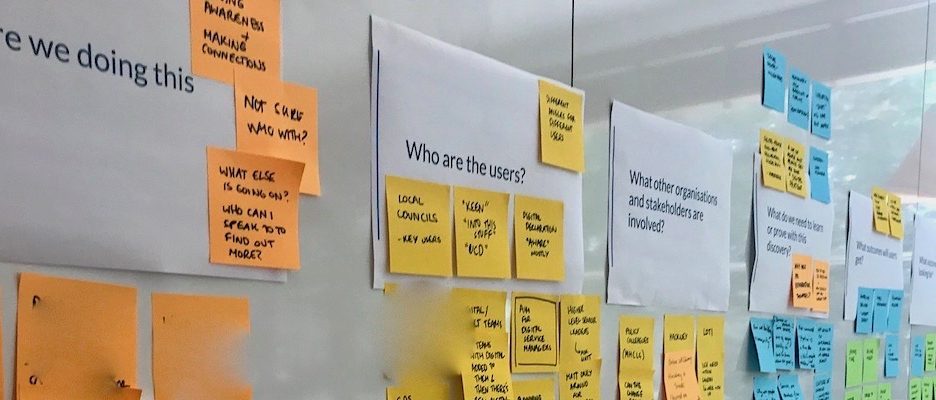Good questions to kick off a discovery

To kick-off some recent discoveries we’ve been using a different set of questions
When dxw start a new project, we usually run a roadmapping session with the organisation we’re working with. To structure the session we use a set of questions proposed by Jamie Arnold.
These questions work well for alphas and betas where we know we’re designing and making a service.
We’ve found that they don’t work so well for discoveries, where it can be less clear what the end result will be, and whether we’re looking at a single service or cutting across several.
Trying different questions
To kick-off some recent discoveries we’ve been using a different set of questions.
These are based on the questions to frame a problem that Ben Holiday wrote about, the discovery inception categories that Will Myddelton described, along with some of the current roadmapping questions.
As we’ve used the questions on different projects, we’ve tweaked them and the order we ask them in.
We feel like they’re working well, so we’re sharing them here.
Questions for discovery
1. Why are we doing this work?
What is the motivation? What are we trying to do or decide? And why now? What is the trigger?
2. Who are the users?
Are they members of the public, professionals or staff? What different groups, circumstances and behaviours might be important? Are they current or potential users?
3. What organisations and stakeholders are involved?
What is their relationship to the work? How closely might they be involved? How might they help?
4. What outcomes will users get?
What do we know about their intentions? What’s working that we might we build on? What problems might we solve?
5. What outcomes are we looking for?
What is the client organisation trying to achieve? What problems are they trying to solve? What are the other organisations and stakeholders looking to get?
6. What do we need to learn or prove?
What questions are we trying to answer? What do we need to know to make good decisions? What assumptions should we be testing? What might we already know?
7. What do we need to communicate?
What meetings, governance and other processes do we need to feed into? What outputs might we expect to create? For who? How will we share them?
8. What other work relates to this?
What has been done before, or is being done now? What can we learn from each other? What should we share? How do we stay aligned with that work?
9. What difficulties might we expect?
How might we be blocked? What rabbit holes could we fall down?
Asking the questions
To prepare the room:
- Write each question on a separate sheet of paper or at the top of a piece of flip chart paper.
- Stick them up on a wall so that everyone can see them.
For each question sheet:
- Ask the question to get a discussion started.
- Write bullet points on the appropriate sheet or on sticky notes to summarise what people say.
- Ask follow up questions to clarify what you hear and to make sure you include everyone’s thoughts.
- Ask about priority and scope. What’s essential? And what’s out of scope?
You can facilitate this on your own, but the first few times you might want to have a separate moderator and scribe. And it always helps to have another colleague in the crowd who is focussed on listening and picking up on anything you miss.

It’s best to put all the questions up together. The things people say in the discussion will often relate to more than one question – for example, people often mention outcomes for the organisation when they talk about why we’re doing the work. With all the sheets up you can add bullet points to the appropriate sheet.
This method works well for groups up to 10 and typically takes 90 minutes to 2 hours.
Managing the session
When you invite stakeholders to the workshop, aim to get a good mix of senior decision makers with a broad understanding of context and outcomes, together with colleagues who have more practical and detailed knowledge. Aim to cover the key interest groups so nobody is left feeling unrepresented.
Some people you invite may not see the point of the workshop. They may feel that you have all the necessary information in the documents you’ve received. Or that you’ve discussed the important points already.
Sharing the questions in advance can help people to understand the purpose of the session and to prepare for it. Make sure you acknowledge what you’ve received and discussed already, so people don’t feel like you’ve ignored all that.
I always say that we haven’t got long for the discovery. We want to hear from everyone, to make sure we’re focussing on the right things, so they get the most out of the work.
During the session, most people will be happy to talk – this is something they’re interested in and know loads about. So you’ll need to manage the session closely to make sure you get through all the questions in a reasonable amount of time.
The questions and workshop format are good for uncovering different opinions, conflicting objectives, unrealistic expectations, etc. It’s good to note those things during the session so everyone knows there are different viewpoints. But don’t make a big deal of it and derail your own meeting. It’s a discovery and part of the point is to identify those differences and help resolve them into something more coherent.
Using the workshop outputs
The question sheets create ready-made outputs from the workshop. You can transcribe the points you collect into a document, or into another tool like Trello or Miro.

From there you can use the answers to:
- Set overall discovery and first sprint goals.
- Plan the discovery activities – including stakeholder engagement, desk research, user research, business process analysis and journey mapping.
- Build an initial map of the problem space to define a scope for the discovery.
- Start thinking about the possible shape of the discovery outputs.
Next steps
Now we’re confident the questions are working well, we’ll add them to our Playbook and continue to improve them.
Please try out them out to kick off your discovery, and let us know how you get on.